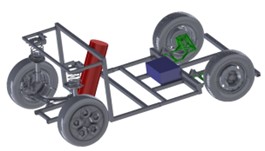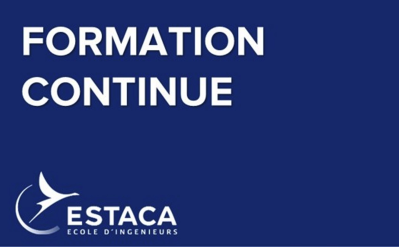News

Designing a rolling platform in partnership with student designers
As part of the eXtreme Challenge launched by ADEME, ESTACA students have developed an experimental platform to enable design students fromENSCI les Ateliers (Ecole Nationale Supérieure de Création Industrielle) to develop the design of new lightweight, energy-efficient vehicles.
The eXtreme Défi, a three-year innovation program launched by ADEME
The eXtreme Défi, proposed by ADEME (Agence de l'Environnement et de la Maîtrise de l'Énergie) in 2022, aims to create new solutions to replace the car in everyday travel in peri-urban and rural areas. The aim is to enable all users to use the mobility solutions best suited to their needs, while limiting their carbon footprint. ESTACA is one of eXtrême Défi's long-standing partners, and Bertrand Barbedette, a teacher-researcher at the school, is a key player in the ADEME project as a member of the "Schools and Universities" working group. It is he who supervises the students working on the various projects proposed as part of their engineering training.
Last year, during the ideation phase, some fifteen ESTACA students worked on ESTACYCLE, a hybrid tricycle project with supercapacitors (an alternative to lithium batteries). The first phase brought together a total of over 600 people in France, divided into 43 teams of 3 (entrepreneurs, industrialists, researchers, teachers, etc.), who designed 43 vehicles (or families of vehicles), all meeting the eXtrême Défi specifications.
This year, for the 2nd phase of the eXtreme Défi, the aim is to move on to detailed design, prototyping and experimentation. At ESTACA, several teams of 5th-year ESTACA students are taking part in various studies as part of their academic projects. In particular, one team is supporting two Laval-based companies, HPR Solutions "Urbaner" and Bluemooov, which produce an electric cargo bike and three-wheeled vehicles for parcel logistics, and have embarked on a project for a new light vehicle.
ESTACA students design a rolling platform for ENSCI designers
To meet the needs of some of the equiques selected for the prototyping phase, six ESTACA 5th year Eco-conception students designed a generic rolling platform for an intermediate vehicle (scale 1). The aim was to enable design students from ENSCI-Les Ateliers to produce a prototype with different body designs using new materials.
At the beginning of February, ESTACA students presented their model rolling platform for educational purposes, with the following specifications: based on an AMI 4-seater electric car without a license, with a chassis that can be modified in terms of geometry, ground connections, motorization and steering, with a carrying capacity of 100kg and a speed of 10 km/h. The platform also had to include mounting points for a textile body. The aim was to design a platform that was sufficiently flexible to allow designers a great deal of creative freedom, with low-speed movement to enable them to experiment with the use of interfaces for the driver and passengers while driving.
The ESTACA students proposed two versions of their platform: an AMI retrofit version (chassis rebuilt from an existing AMI) and an innovative NOVASKATE modular version with a rear axle freed from vertical suspensions, the integration of motoroues, adjustable steering for the cockpit and a longitudinally telescopic chassis.
The eXtreme Challenge tomorrow...
ESTACA plans to continue offering its students eXtreme Challenge projects next year. Ideally, one team could work on a prototype of the platform modeled this year. Other projects will certainly be proposed, either as part of a new ideation or design phase, or even pre-industrialization of the selected projects. The ambition will always be to challenge manufacturers on the subject of lighter, simpler and less expensive vehicles that meet a wide range of mobility needs.
Bertrand Barbedette, a teacher-researcher at ESTACA who is piloting these projects with ADEME, comments: " The eXtrême Défi projects will enable us to develop educational objects for ESTACA students, but in the long term they could also help to show younger students, such as high school pupils, concrete examples of innovative vehicles designed to help tomorrow's mobility evolve.

















No comment
Log in to post comment. Log in.